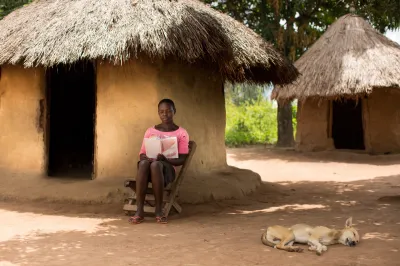How Does Mobile Money in Kenya Affect Financial Inclusion?
The rapid uptake of mobile money transfer in Kenya has ignited enthusiasm globally over the potential to bank poor people via the platform of mobile phone technology. On the basis of research undertaken for Financial Sector Deepening Kenya, I argue that the evidence suggests an alternative explanation which means that formal service provision for poor people needs to be thought through in a very different way. It means going beyond the expectation that mobile technology can adequately lower transactions costs to produce a revolution in inclusion, to recognising that managing financial resources has important social dimensions.
The research examined the reasons behind use of the whole range of services and so explores how mobile money transfer fits into the financial landscape as a whole. For years the popularity of informal financial groups in the form of ROSCAs and ASCAs has been evident. Indeed, many of those who are banked also use these mechanisms. Mobile money transfer has now overtaken informal financial groups as the most used service. In our survey, based in three more rural towns and chosen to cross-cut poverty levels but particularly focus on the low-income group, some 61% were registered mobile money transfer users, 51% were using informal financial groups and 36% were using banks (higher than the last FinAccess 2009 survey figures of 22%). So how can we explain why banks lag so far behind when from an objective perspective they appear to offer a safe and secure place to save?
The reasons people give for using mobile money transfer have now gone a long way beyond the original “send money home” remittance rationale. Mobile money seamlessly facilitates inter-personal transfers to their close and extended family and friends for school fees, investments, celebrations and funerals, “assistance” and “help”, borrowing and so on – that is, any reason that people might need to send money to each other.
These interpersonal transfers operate within social networks that involve relationships of ‘give and take’ that can operate over long periods of time and in which resource transfers may be given in one form, for example, cash and returned in other, for example, support with resources of many different kinds or social connections to a job and so on. Hence mobile money transfer has brought a range of financial transactions that involve a reciprocal dimension.
Informal financial groups offer, first, discipline and commitment in saving through the regularity of the contribution; second, the ability to access small but useful lumps sums; and third, proximate liquidity in the event of particular emergencies or needs. The latter is achieved through the social connections groups offer which allow people to negotiate access to funds directly from the group or indirectly from other members. These groups can also be characterised as operating through a reciprocal dimension. Hence they operate with some similar characteristics to the transfers being captured by mobile money transfer: there is reciprocity and negotiability over how funds are borrowed (or ‘saved’ with others) and returned.
Our evidence indicates that the logic behind bank account use is often related to the need to receive payments rather than make voluntary savings and this helps explain high levels of dormancy. Access to loans from banks is limited and they can be hard to manage when they are received. Since interest on small amounts of savings is effectively irrelevant and loans are hard to get, putting funds in the bank secures neither access to financial support nor useful social connections. That is, banks lack an attractive reciprocal dimension and there is little negotiability involved.
Hence this argument suggests that the rise of mobile money transfer is evidence of extensive informal financial behaviour which has characteristics similar those to informal financial groups. Hence rather than suggesting that mobile money is a short cut to formal sector financial inclusion, this analysis suggests that mobile money transfer has revealed an alternative underlying logic to which the formal sector needs to respond if it is to attract savings – it must offer an acceptable reciprocal relationship. In order to provoke discussion an alternative approach might be for banks to pursue a “credit-led savings” strategy in which they offer easily accessible small personal finance loans in order to demonstrate that they can enter into valuable relationships with their customers.
For further information click the following link for the summary and the full report. Also, for more information, check out Dr. Johnson’s recent post at Accion’s Centre for Financial Inclusion blog.
Topic: Digital Innovation
Countries:




Comments
Dr. Johnson, I read your blog
Dr. Johnson, I read your blog at CFI and here I learn something new, the perspective that banks, to attract savings from the low income households, they must improve on their value proposition. I agree that if banks provide an easy credit line to low income earners, that can entice them into the mainstream and while there encourage savings and other financial services mutually beneficial. So far, the banks have lost them to the informal setups. The only big problem with banks is that they want to click the button at every month end and generate hundreds of millions in ledger fees from all account holders. If such fee is $1.2, they should know that that is a lot to the low income groups they would want to entice. They may not be financially literate but they know that $1.2 is enough to buy 20 matchboxes that can last them a whole year. To the banks, when such customers complain that the ledger fee of $1.2 is too high, they wonder what they got themselves into and the temptation is to chase them away as unviable clientele.
Add new comment